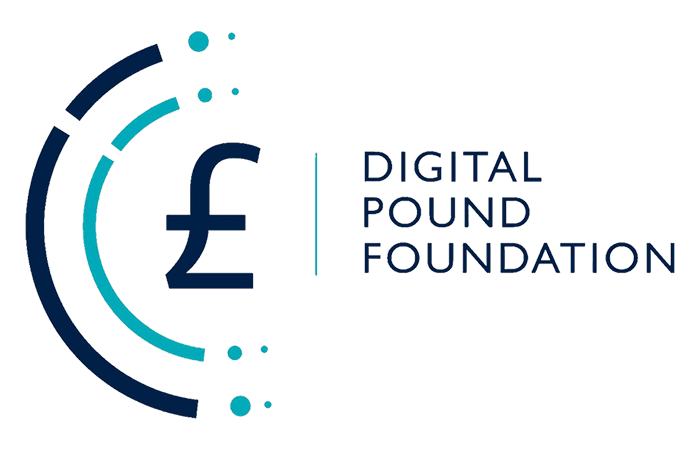Co-authored by Jannah Patchay, Jim Ford, Phil Kenworthy, and Jonathan Marriott
Following Russia’s invasion of Ukraine, the US, EU and UK have quickly moved to implement sanctions against Russian financial institutions, companies and individual oligarchs. After much discussion and negotiation, it was also announced that Russian banks would be ejected from the SWIFT network. Opinion has been divided as to the effectiveness of this measure, and there has been much enthusiastic media speculation around the potential workarounds, including the use of other payments and messaging systems as well as the use of new forms of digital money and cryptocurrencies, that Russia could implement in order to bypass SWIFT. In this article, we’ll take a look at SWIFT, what it is (and what it isn’t), and what exclusion from the SWIFT network does (and doesn’t) mean in practice. We’ll also take a look at some of the proposed bypass mechanisms, and assess their practicable feasibility.
So what is SWIFT, anyway?
SWIFT – the Society for Worldwide Interbank Financial Telecommunication – is a commercial bank-owned entity, based in Brussels, that operates a messaging network that enables transmission of information for the settlement of financial transactions. It is overseen on a co-operative basis by a number of central banks, with the National Bank of Belgium taking the lead. SWIFT’s messaging network covers a wide range of financial products including payments, securities, derivatives and foreign exchange (FX). Geographically, its reach spans over 200 countries and territories with over 11,000 banks and financial institutions as members, as well as corporates.
It is very important to emphasise that SWIFT is not a payments system per se; rather, it carries the messages containing the details of transactions being processed across the payment system. Many national payment systems across the world require that their participants use it as the required message provider for their payments. In 2021, an average of 42 million payments and securities transactions were processed per day across SWIFT’s FIN messaging service. It’s been around for quite a while (build on it commenced in 1973, and it went live in 1977) and is without a doubt a bedrock of the international payments system. As such, it is deemed a critical market infrastructure provider, given its role at both domestic and international level.

How does SWIFT work?
Each SWIFT member is assigned a SWIFT Bank Identity Code (BIC), which uniquely identifies that member and enables identification of the message sender and message recipient, like an address. The BIC codes are available to members via the SWIFT BIC Directory, and need to be quoted by the originating bank, when addressing payment instructions sent across the SWIFT network to a particular destination bank. SWIFT also defines the message standards for its network, and banks’ applications and systems are programmed to use these standards when sending messages between participants, across the network. Banks can either have full SWIFT connectivity themselves via a SWIFT Gateway, or, for smaller institution, they can connect via dedicated SWIFT “Service Bureaux” that are run by independent commercial companies.
What happens when we take a bank out of SWIFT?
By suspending a bank’s BIC from the messaging network, that bank becomes cut-off from the SWIFT community and will not be able to send or receive any SWIFT messages. This means that the excluded bank will not be able to send instructions over those payment systems that utilise SWIFT messaging. In the UK, a bank that has its BIC suspended would not be able to send messages over CHAPS, a UK domestic payments system (although other UK domestic payment systems, including the UK’s Faster Payment System (FPS), use different messaging networks). However, most international payments take place using SWIFT messaging. Internationally, this would mean banks would also be unlikely to be able to send payment instructions to local “correspondent banks” that would normally act on their behalf in other jurisdictions.
Given banks act on both their own behalf and on behalf of their clients, the ramifications for their business, and those of their clients, can be severe. Exclusion from SWIFT also makes it very difficult for excluded banks to settle their securities and derivatives transactions, which has an impact on the wider financial markets, and to participate in international trade, as most of the payments for imports and exports would be facilitated by banks across the SWIFT network.

Could Russia use alternative messaging networks?
A couple of potential alternatives to SWIFT have been mooted, including the Chinese Cross-Border Interbank Payments System (CIPS), and Russia’s own System for Transfer of Financial Messages (SPFS). However, it is not very realistic that either of these will solve Russia’s problems. CIPS was built to facilitate settlement of international Chinese yuan-denominated transactions, primarily supporting Chinese banks, whilst most transactions globally are settled in US dollars. SPFS participation is currently limited to Russian domestic participants, as it is not connected to any other non-Russian networks. It is possible that SPFS and CIPS could be linked together, but this would take time, and there would be limited utility unless a wider range of global banks participated in these networks, which is unlikely for many reasons.
Excluded banks would also need to migrate their internal systems away from SWIFT and onto the chosen alternative messaging format. If we bear in mind that larger banks could well have dozens, if not hundreds of platforms and systems that are programmed to use the SWIFT messaging format, it becomes clear that this would be a non-trivial undertaking in time and cost. Banks also typically have between 50 and 100 correspondent banks worldwide through which they access different jurisdictions, and special arrangements would need to be made with each one as to how payment instructions were to be received (and again it’s unlikely that anyone outside China or Russia would be rushing to embrace the new alternative).
While not impossible, a shorter term implementation would likely involve heavy use of manual workarounds, reducing the banks’ straight-through processing (STP) capabilities on which they are dependent for all sorts of regulatory compliance, and reintroducing all the potential errors associated with a manual process. Even submitting payments via an online platform or other digital channel could mean a Russian bank having to adjust to a range of different standards. The real killer, of course, is that ultimately sanctions still apply to Russian banks, and therefore no US, UK or EU banks, or most others, would be able to transact with them in any case.

Could Russia use cryptocurrency to bypass SWIFT?
There has been much overexcited, breathless reporting in the media of the potential for Russia to use cryptocurrencies such as Bitcoin as a means of bypassing the SWIFT network. The crypto community has been quick to rebut these, pointing out many obvious issues with these theories.
Issue No. 1: Infrastructure
Institutional trading in financial markets typically requires secure connectivity, using standard protocols, to regulated, highly secure exchanges on which large volumes can be traded with ease. Whilst some cryptocurrency exchanges have implemented features to attract institutional trading, these are typically aimed at the buy-side (fund and asset managers and other investors that tend to trade less frequently and may not have the same time criticality in their trading requirements) as opposed to the sell-side (banks and brokers who transact high volumes, with high frequency). Whilst cryptocurrency trades, when executed, can settle near-instantaneously against other cryptos or stablecoins, it’s the time to execution that can be lengthy in a less liquid or illiquid market, and also the logistical challenges – and tax implications, in many jurisdictions – of converting crypto back to fiat currencies.
Issue No. 2: Transparency
Sanctions apply to any activity with sanctioned entities, and that includes cryptocurrency trading. Any transactions that take place between Russia and other entities would therefore, in theory, need to be obfuscated. Blockchains are transparent in nature, and so the addresses associated with suspicious activity can easily be identified and blocked. An article from POLITICO included a quote from Ari Redbord, a former Treasury official who now heads legal and government affairs for the blockchain intelligence company TRM Labs, stating “We have never had more visibility of financial flows and money laundering than we do today in cryptocurrency”. Even if Russia had the means to obfuscate their transactions, there simply wouldn’t be enough liquidity to facilitate the number of transactions required, and therefore the forensics tools used by governments would easily detect such illegal activity.
Issue No. 3: Liquidity
We touched upon this in both the points above, but as of today the cryptocurrency market is simply too illiquid to support the value of daily FX transactions required by Russia. This statement is backed up by Asheesh Birla, General Manager of Ripplenet, who stated on Twitter that “Russia conducts nearly $50B in FX transactions a day. As the largest crypto, bitcoin’s volume is usually between about 20-50B a day. Russia’s needs would encompass BTC and more!”. It’s certainly likely that some individual Russian citizens, in the frantic rush to divest themselves of rubles as their national currency continues its downward spiral, will have converted their savings to crypto. However, at the scale of interbank payments and central bank transactions, cryptocurrency markets are of little use.

Summing it up
In conclusion, Russian banks could possibly use alternative systems such as CIPS or SPFS to facilitate some of their international payments, to a very limited extent, but it’s unlikely to be workable for a number of technical, logistical and – not least of all – regulatory reasons. Crypto is also not an obvious solution at the institutional level. The prohibitions on trade that were introduced by US, UK and EU sanctions apply to all activity with sanctioned entities, not only SWIFT – so even if a viable technical alternative were available, Russian banks would still struggle to access their counterparties on the global financial markets.
Just excluding Russia from SWIFT will not on its own damage Russia’s finances irreparably, but it does help to enforce these sanctions from a technical perspective. It’s ultimately the sanctions themselves that will isolate Russia and make it more difficult to sustain its own economy, and its war on Ukraine. The decision by the G7 to freeze all Russian central bank assets held in their countries is also a significant source of pressure, as it effectively nullifies the Russian central bank’s ability to prop up the falling ruble using its reserves held in those countries. To paraphrase John Donne, “No country is an island entire of itself”, and this is even more true in an increasingly connected, digital world.
























































